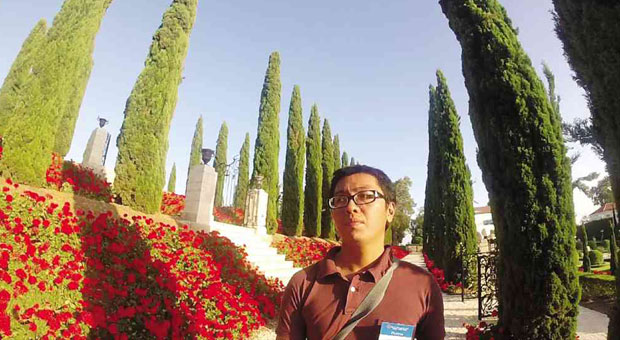As real as ‘Cine’ gets
A Facebook photo shows young people lining up in a cineplex to watch a documentary. It’s not a documentarian’s flight of fancy; it’s for real.
Against all odds, GMA News TV mounted the first Cine Totoo Philippine International Documentary Film Festival in three malls: TriNoma, SM Megamall and SM Manila (until Tuesday).
In the Philippine section, 11 docus competed; while seven films vied for the top prize in the Southeast Asian section. Awarding is on Oct. 2.
The Filipino documentarians tackled a wide array of topics.
Keith Sicat’s “Komikero Chronicles” turned the spotlight on the local comic book community.
Article continues after this advertisementAs a self-confessed comic book aficionado, Sicat thought the time was ripe for his docu. “For the longest time, critics looked down on komiks as bakya, only for the masses. But this year, komiks icon Francisco V. Coching was proclaimed a National Artist. Recently, I found out that (national hero) Jose Rizal was our first comic book creator.”
Article continues after this advertisementComic books “communicate societal and political ideas to the masses,” he said. “Some comics can be escapist, but often these stories reflect social realities.”
Rafael Froilan’s “Mananayaw” explores the world of male ballet dancers. Beatriz Antonia Carabeo of Ballet Philippines noted: “We chose to tell the stories of male ballet dancers because they so rarely get the credit they deserve. They are the unsung heroes of the dance world.”
She explained: “A male dancer is doing his job properly when the audience doesn’t notice the work he has put in. It’s high time they are recognized for their own merits.”
Nawruz Paguidopon’s “A Journey to Haifa” chronicles a personal odyssey, alongside a pilgrimage to Israel. “I wanted to share my own experiences growing up gay, reconciling my gender [identity] with my faith (Baha’i). With this docu, I wish to empower not only myself, but other young gay people living in their own religious communities.”
Tchoukball
Charliebebs Gohetia’s “Kung Giunsa Pagbuhat ang Binsayang Chopsuey (How to Make a Visayan Chopsuey)” recounts the struggles of Tchoukball players from Davao City as they prepare for an international tournament.
“Although Tchoukball is a relatively unknown sport here, there is so much politics going on within its ranks,” Gohetia related. “It’s a reflection of how sports is being managed in the country. These players are quite interesting. The national team tells a compelling David-versus-Goliath story that the world needs to know.”
Ferdinand John Balanag’s “Agbalbalitok (The Gold Prospector)” follows a young Ibaloi miner who strives to provide for his family.
Balanag had to immerse himself in his subject’s world—figuratively going underground with his subject.
“It took time before the miners warmed up to the idea. I had to gain their trust and approval…that I will tell their story correctly. It was like holding up a mirror to them, making them realize their good and bad points…so that future generations can learn from their mistakes for the good of the community and the environment,” he pointed out.
Docus should present unvarnished facts, after all.
“Recently, more people are learning to appreciate documentary films,” Balanag remarked. “People are drawn to the realness. They realize that, in the end, the truth is what matters.”
Carabeo said, “Moviegoers are always looking for something new and unexpected. The Cine Totoo docus push the envelope and play with the boundaries of filmmaking.”
Sicat feels it is vital “to offer alternatives to moviegoers. Docus should have a place in the cineplex. Educational institutions can help by encouraging students to watch and participate in the open fora to start a meaningful dialogue.”
Paguidopon agreed: “There should be more cinematheques that showcase docus. Documentary film appreciation should be integrated in the curriculum.”
“Cine Totoo provided a great venue to showcase creative docus different from the ones shown on TV. It’s a brave, huge step toward educating viewers,” said Gohetia.
The other Filipino docus in Cine Totoo are Sigfreid Barros Sanchez’s “Ang Gitaristang Hindi Marunong Magsakla,” Richard Legaspi’s “Ang Walang Kapagurang Pulang Maleta,” Jan Tristan Pandy’s “Gusto Nang Umuwi ni Joy,” Ivy Rose Universe Baldoza’s “Marciano,” Nef Luczon’s “Migkahi e si Amey te, Uli ki pad (Father Said, Let’s Return Home)” and Carla Samantha Ocampo’s “Walang Rape sa Bontok.”
The films included in the Southeast Asian section are Tan Pin Pin’s “To Singapore With Love,” Misha Anissimov’s “Once in a Lifetime: A Russian Song for Guiuan,” Nontawat Numbenchapol’s “By the River” and “Boundary,” Dwi Sujanti Nugraheni’s “Denok and Gareng,” Adjani Arumpac’s “War is a Tender Thing” and Uruphong Raksasad’s “The Songs of Rice.”
